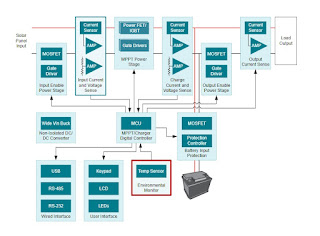What is a Power Conditioner?
Looking to protect your sensitive and expensive electronics? Surge protection is a great start, but power conditioners also offer valuable protection for components in entertainment and sound systems, as well as home office devices.
What does a power conditioner do that a surge protector can’t?
Surge protectors are a great defense against damaging voltage spikes. However more than surges and spikes can effect certain sensitive electronic devices. Radio frequency interference (RFI), electro-magnetic interference (EMI) and voltage fluctuations can also effect sound, entertainment, and office devices, causing a reduction in sound and picture quality.
How does it work?
Power conditioners act as a buffer between the outlet and your system, smoothing out voltage fluctuations as well as radio and electromagnetic interference that can effect system performance. Initially used in industrial, research and laboratory applications, not long after the introduction of home computer systems, the usefulness of surge protection, uninterruptible power supplies, and (later) power conditioners were brought to light, as were the advantages of their use with other home electronics, such as entertainment and sound equipment.
Power conditioning advantages include:
*Equipment protection
○Protection against voltages surges through electrical lines, phone lines, coax TV inputs and LAN connections that can result in the degradation of ○system performance or system failure.
*Noise removal
○Removal of noise in electrical lines resulting from radio and TV stations, mobile devices, motors – even high-current appliances (vacuums, refrigerators) can generate noise.
*Fluctuation correction
○Of voltage and waveform distortions.
Products and reference designs of Power quality meter
Design requirements
Power quality meter designs often require:
●Real-time analysis of power quality.
●Reliable wired or wireless connectivity in challenging factory environments.
●Accurate energy measurement and compliance with IEC standards.
AC/DC power supply
Power quality meter designers often choose non-isolated AC/DC power supplies to minimize system cost. TI offers several power supply topologies which support wide input voltage ranges, various output power levels, and high efficiency. AC/DC power supply includes Flyback controllers、Shunt voltage references, the corresponding products are UCC28710、ATL431LI
Energy storage
Smart meters rely on batteries or Super Caps to provide an energy source during Grid outage scenarios where the transmission of alert messages and orderly shutdown of the meter is required. This energy storage device can also be used to provide boost current to RF power amplifiers for high output power transmissions. TI has multiple options for battery monitoring and management.. Energy storage includes Battery fuel gauges, the corresponding product is BQ27Z558
DC/DC power supply
Power quality meters have multiple digital, analog, and RF blocks with individual DC power requirements. Depending on power levels TI has DC/DC converters, LDOs and power management ICs (PMIC) that can help to reduce power dissipation and size in the solution. DC/DC power supply includes Multi-channel ICs (PMICs)、Buck converters (integrated switch)、Isolated DC/DC converters & modules、Linear & low-dropout (LDO) regulators、Transformer drivers, the corresponding products are TPS65218D0、LMQ61460、DCH010505S、TLV743P、SN6501
Metrology
The metrology subsystem of a power quality meter samples the current and voltage for each phase of the mains and conditions the signals to be fed into the analog to digital converter. The analog front end is designed to interface with the chosen sensor technology. The metrology subsystem needs to precisely measure multiple current and voltage signals to ensure accurate energy calculations plus monitor the voltage signals for fast transient signals. This is often accomplished by using both Delta-Sigma analog to digital converters plus high-speed ADCs. Metrology includes Precision ADCs、High-speed ADCs (≥10 MSPS)、Precision DACs (≤10 MSPS)、Analog temperature sensors、Digital temperature sensors、General-purpose op amps、Precision op amps (Vos<1mV)、High-speed op amps (GBW ≥ 50 MHz)、Series voltage references、ESD protection diodes、Clock generators、Isolated amplifiers, the corresponding products are ADS131M02、ADC3660、DAC8760、TMP236-Q1、TMP1075、TLV9064、OPA2192、OPA2810、REF54、TPD4E001、CDCE6214Q1TM、AMC1100
Wired communication
Wireless communication is the major form of Advanced Metering Infrastructure (AMI) networks for smart meters. We have solutions for all major low power wireless standards including support for antenna layout and protocol stacks. Wired communication includes RS-485 & RS-422 transceivers、Ethernet PHYs、ESD protection diodes、RS-232 transceivers、TVS diodes、Digital isolators、Isolated RS-485 transceivers, the corresponding products are THVD1452、DP83822I、TPD4E05U06、TRS3232E、TVS1800、ISO7720、ISO1410
Application processor
Power quality meters use embedded processing to perform all the calculations required for electricity meter metrology plus power quality parameters such as harmonic analysis, voltage sags/swells, transiet detection and other parameters as defined in international standards such as IEC-61000-4-30. High-speed processors are also used for user interface, external control, communication and other user applications. Application processor includes MSP430 microcontrollers、Arm-based processors、General-purpose op amps、Auto-direction voltage translators、Fixed-direction voltage translators、ESD protection diodes、TVS diodes、Supervisor & reset ICs, the corresponding products are MSP430FR2353、AM4372、TLV9064、TLV9001、LSF0204D、SN74LV1T34、TPD4E001、TVS1800、TPS3808E
Wireless communication
Wireless communication is the major form of advanced metering Infrastructure (AMI) networks for smart meters. We have solutions for all major low power wireless standards including support for antenna layout and protocol stacks. Wireless communication includes Wi-Fi products、Low-power 2.4-GHz products、Sub-1 GHz wireless MCUs, the corresponding products are CC3301、CC2651R3、CC1312R
How much do power conditioning devices cost?
Power conditioning devices range in price based on type, options, and quality from less than $80 to upwards of $3,000. While some come solo (and can be easily added to your existing point-of-use surge protection), others are sold in combination with point-of-use surge protection devices. Fortunately, the difference between even basic conditioning, and none at all, is dramatic.
Lansheng Technology Limited, which is a spot stock distributor of many well-known brands, we have price advantage of the first-hand spot channel, and have technical supports.
Our main brands: STMicroelectronics, Toshiba, Microchip, Vishay, Marvell, ON Semiconductor, AOS, DIODES, Murata, Samsung, Hyundai/Hynix, Xilinx, Micron, Infinone, Texas Instruments, ADI, Maxim Integrated, NXP, etc
To learn more about our products, services, and capabilities, please visit our website at http://www.lanshengic.com


Comments
Post a Comment